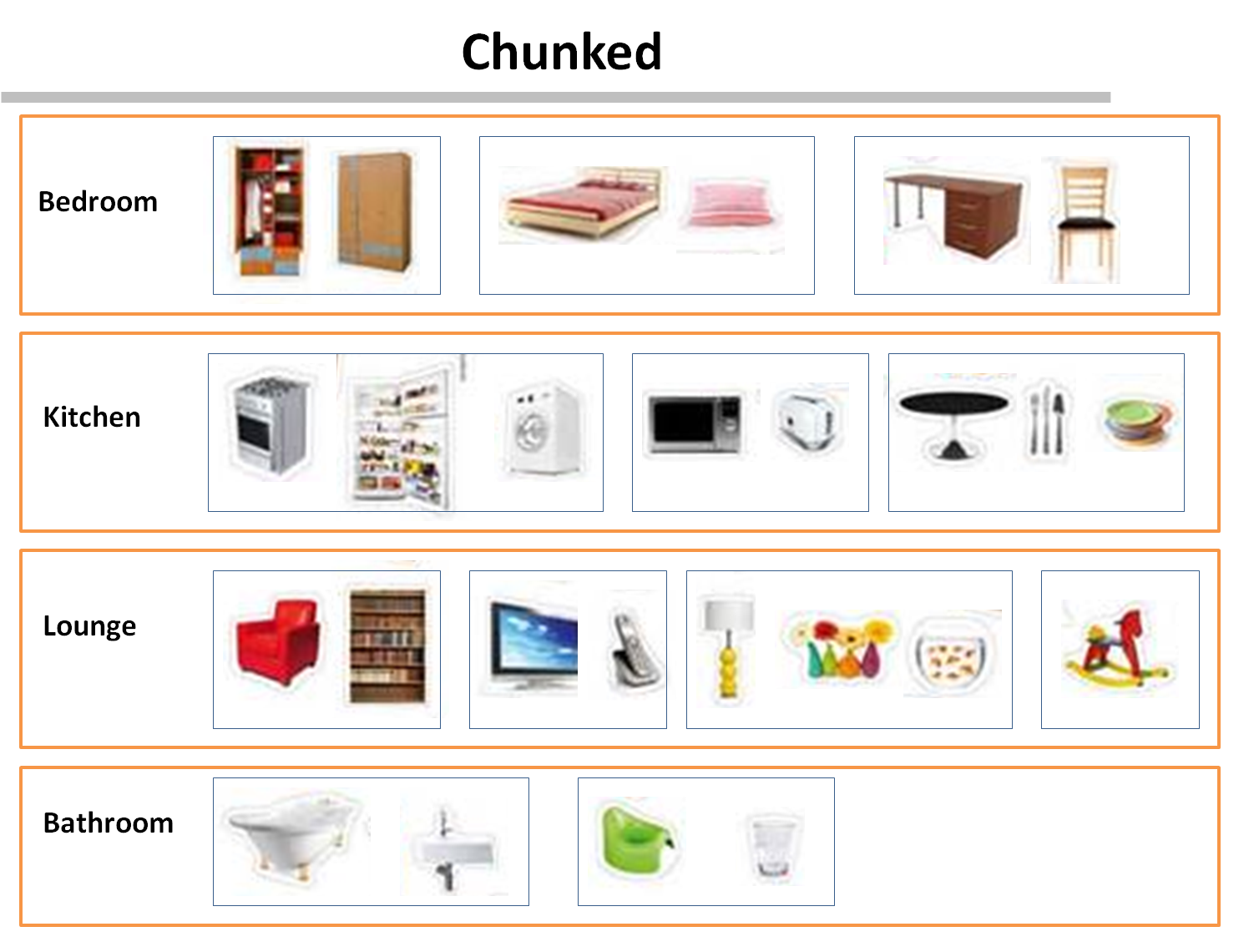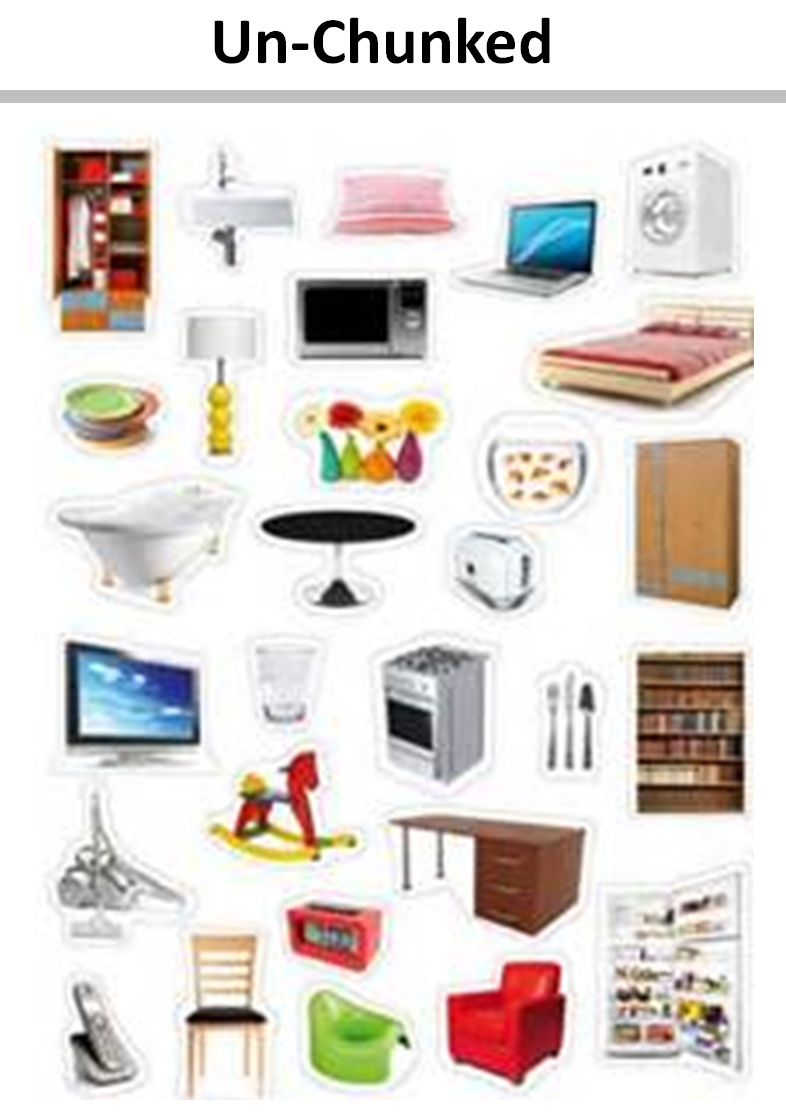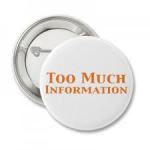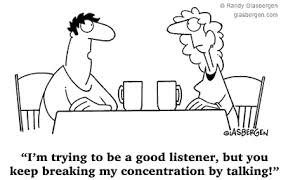Chunking: Want To Be A Better Communicator? Learn To Chunk

Good communication is only as good as the message received, understood and remembered at the other end.
If you speak for an hour, inundating your audience with big concepts and numerous minute details, they’ll quickly reach information overload.
And they’re likely to remember…
… nothing!
When you communicate, you need to consider the time it takes people to assimilate what you’re saying or writing about.
Follow these 4 simple rules.
Organize Your Ideas
When items are categorized, information is much easier to make sense of and retain. And there’s no need to look at each item individually, you can grasp exactly what is being presented.
Here’s a simple example based on a list of everyday objects:
- The image on the left contains all the items on the list.
- The image on the right contains the same items but presented in a logical way (groups and sub-groups).
Which will be easier to remember?


This process of grouping information so that the intended audience easily understands is known as “chunking”.
Here are some tips to chunk effectively:
- Group your ideas into a few main points of information that are the most important for your audience
- Sort out which ideas are the main points, which are supporting information reinforcing the main points and which are just details
- Present the information in a clear, logical, hierarchical and consistent way so the audience gets the big picture at quick glance and has no doubt as to which main points you want them to remember (use formatting in written content, use paragraphs that logically flow into each other in oral content).
Stick to 3-4 Main Points (or Maybe Just 1)
How many bullet points on a slide? How many ideas in your speech?
The Harvard psychologist, George A. Miller, showed that human beings understand and remember no more than seven plus or minus two chunks at a time. This phenomenon is called the ‘chunking limit’ (a chunk being a meaningful, more abstract reference or context to a word or group of words). Subsequent research has then found that 3 to 4 points is a good number. Most neuroscientists agree that, on average, people can hold about 3 or 4 different items in their working memory and can only hold that for a very short time.
Sometimes though, one idea only is all you need. There’s a story about Clinton’s campaing. Clinton had a tendency to talk a lot about many different topics. His campaign advisors kept encouraging him to focus on the economy and to avoid discussing other issues. They used the phrase “message triage”. The campaign coordinator reminded Clinton, “If you say three things, you don’t say anything.” People can hold 3 or 4 ideas in their working memory but sometimes it’s even better to stick to the one idea to make sure you get maximum impact and grab the attention of your audience.
Drop The Details – Use Images
The point of communication is not to prove you’re knowledgeable. It’s to pass your message in clear, simple and effective way so it can be understood and remembered.
Details are likely to clutter your presentation, training, discussion. They hold potential for confusion and thoughts dispersion… the very thing you don’t want.
On the other hand, we’re built for images. They help us remember. A powerful image, used at the right time, will help put your point accross.
Don’t overdo the images. An overdose of average images will just lose your audience too.
And don’t ditch the details. Supply the details if they are necessary but in such a way (annexes,…) that your reader can access them if they want to.
Pause And Interact
Neuroscience tells us that people can only focus their selective attention on one conscious task, such as reading or listening to someone speak or writing notes. We cannot truly multitask so when we try to do all 3 tasks at once, we have to switch back and forth and we end up missing a lot.
On top of that, we’re limited by our working memory. The human mind can only process a few small bits of new information at one time. We need to be able to hold the information in short-term memory for a little while in order to understand ideas, evaluate recommendations and make a decision about any call to action. But, if we make a conscious effort to process the information and if the information is repeated, we stand a much higher chance of remembering it.
The solution?
Interesting stories, gripping examples, interactive exercises, Q&A, discussions are all good techniques whether you’re talking/writing to many or having a one-to-one. Just slowing down and breathing will positively impact your communication.
Further Thoughts
Want to know more about working memory, how it works and strategies to make it work for you?
Here’s a TED talk by educational psychologist Peter Doolittle. It’s funny and a good illustration of the points we’ve just discussed.



Hey Isabelle,
I have used chunking in the past, mainly for memorizing things for school (although these days, I prefer not to memorize. Learn and understand…..memorizing may get me the grade, but what’s the use of getting a good grade without properly understanding the material?).
As for your point about limiting the number of things we talk, this is something I should probably work on (I have been thinking about this, since I am reading David Rock’s ‘Your Brain at work’ and he talks about a lot of the same things, about the capacity of our working memory and so forth).
The main problem with me is that I talk (write) about related things, mostly from my experience (I do love doing this, because I think it adds to the experience – give people something to relate to).
But, like you mentioned, the main aim must be to communicate clearly and effectively, and using too many points won’t help it.
Anyways, thank you for sharing this, Isabelle 🙂